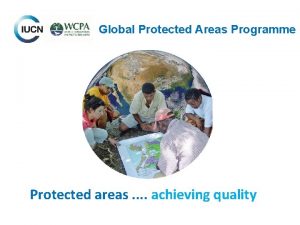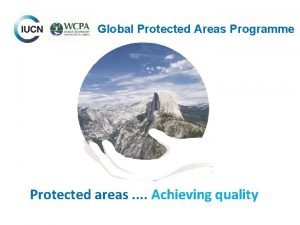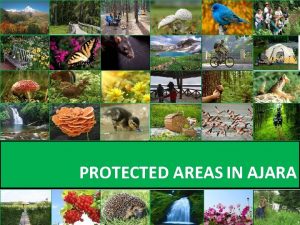The current stateofplay protected areas Existing protected areas




- Slides: 4

The current state-of-play – protected areas • Existing protected areas are not sufficiently comprehensive or adequate to achieve conservation targets. • The degraded state of many rivers poses a practical barrier to effective implementation of conservation targets through the designation of protected areas. • Restoration of some currently degraded ecosystems will be required to complement existing reserves. – These “bits in between” are rarely considered in conservation planning

Aquatic ecosystem restoration. • Most project small-scale, and rarely integrated with conservation programs to achieve specific biodiversity targets. – Artificial distinction between conservation & restoration • Conservation biology and reserve selection principles a useful means of prioritising restoration activities, but rarely applied in aquatic ecosystems.

Principles for ecosystem restoration • To be effective restoration must target the ecosystem level - the river and its surrounding catchment, and be based around well defined objectives. • Lateral and longitudinal connectivity must be considered, both in restoring key processes and protecting restored areas from external threats. – hydrologic alteration a major threat in most rivers • Prioritisation should also consider metapopulation dynamics, redundancy, otogenetic habitat needs

Summary • Restoration of degraded rivers provides a means of integrating protected area management and “the bits in between” to achieve biodiversity targets and maintain ecosystem structure & function • Protected areas, their management, and associated objectives frequently treated separately from restoration programs – Disciplinary divides – Implicit in many government portfolios/legislation – Water/private/public land divisions – especially protected public lands • Conservation biology has already developed the necessary tools to identify priority sites for ecosystem restoration







